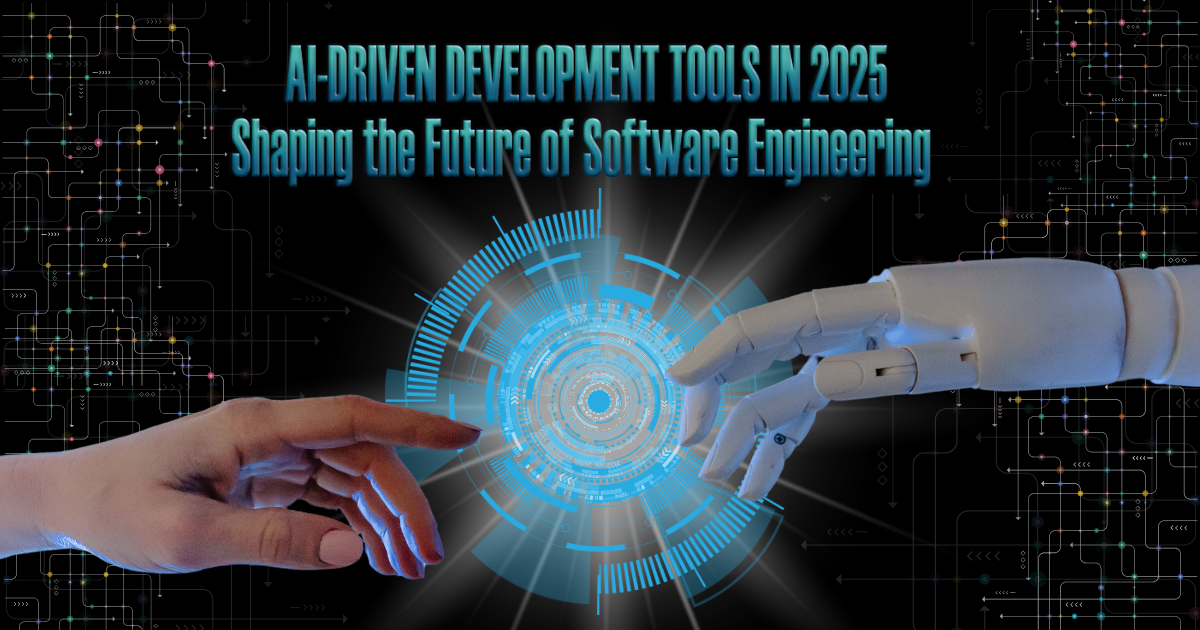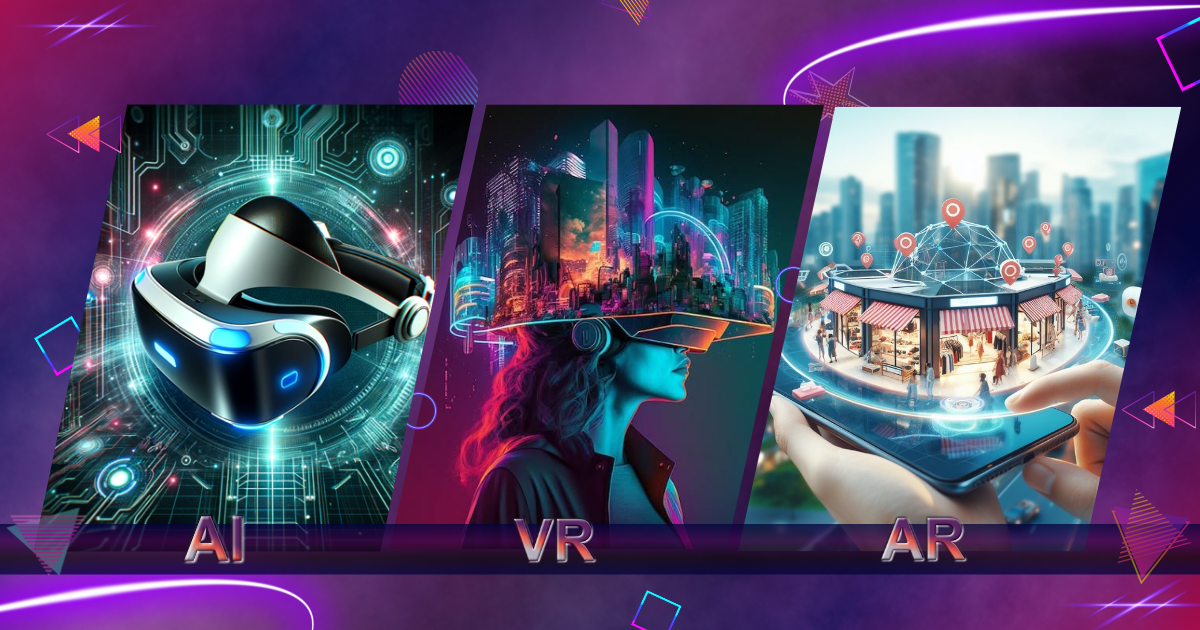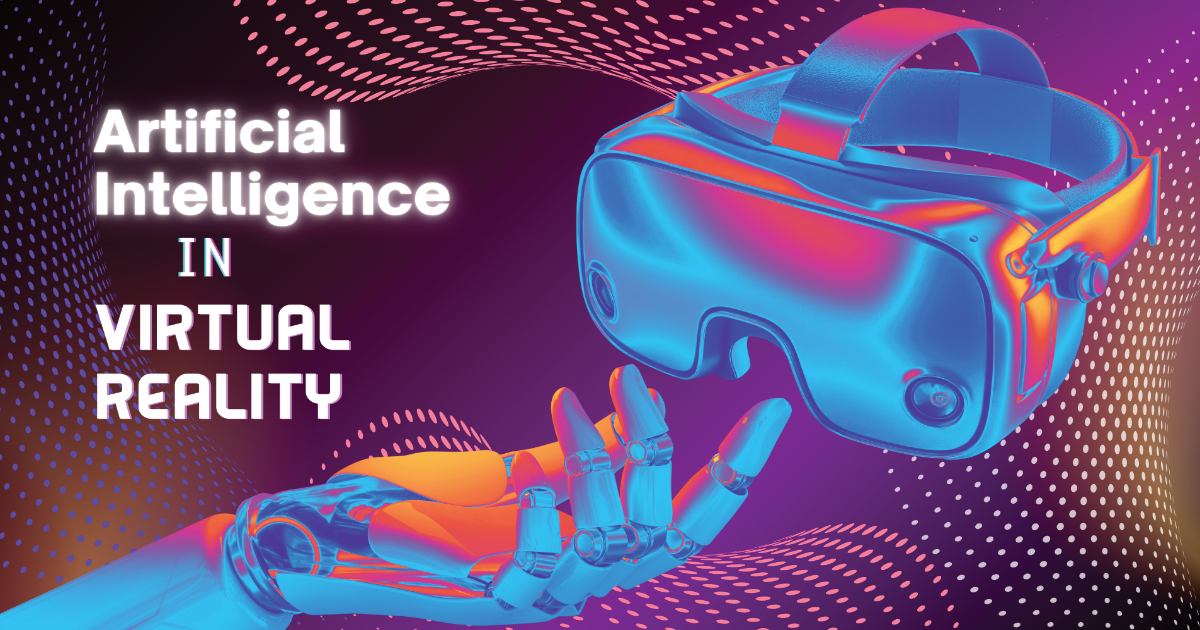
In 2025, immersive technologies, often collectively referred to as Extended Reality (XR), are poised to revolutionize the way we interact with the digital world. XR encompasses three core technologies: Virtual Reality (VR), Augmented Reality (AR), and Mixed Reality (MR). Each of these technologies plays a crucial role in transforming industries, communication, entertainment, and education. As we move further into the future, the boundaries between physical and digital worlds are becoming increasingly blurred, allowing for immersive experiences that enhance how we live, work, and play.
This article explores the evolving landscape of XR in 2025, examining the core technologies, their applications across industries, advancements in hardware and software, and the challenges and opportunities that lie ahead.
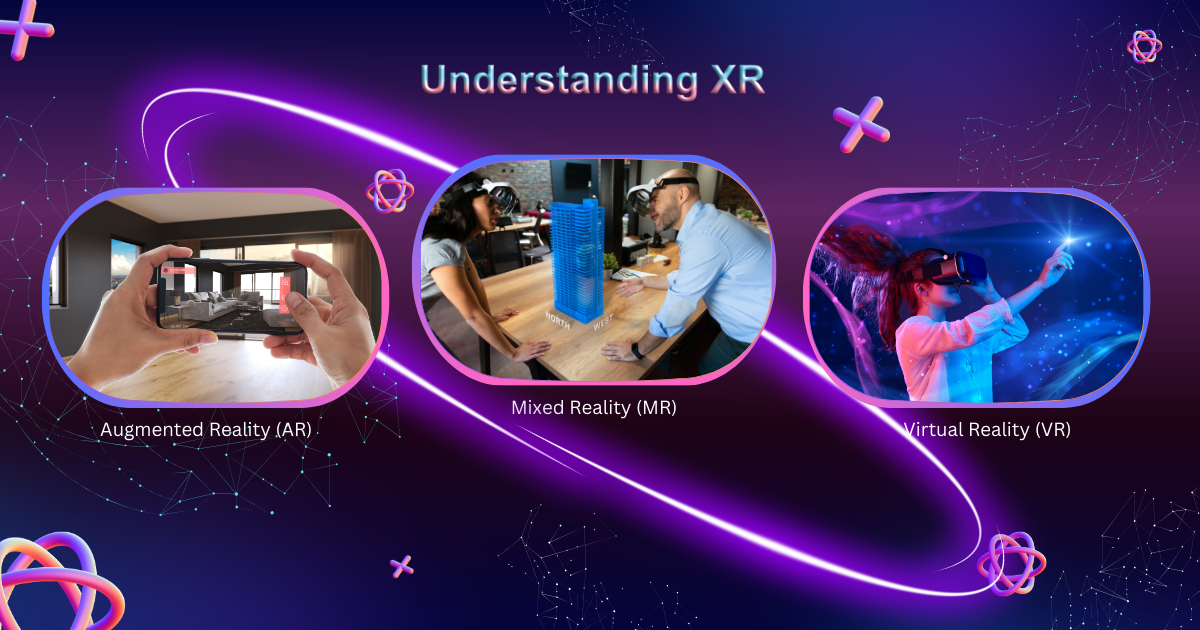
Understanding XR: The Foundation of Immersive Technologies
Virtual Reality (VR)
Virtual Reality (VR) is likely the most recognized immersive technology. It involves creating a completely digital environment that users can explore and interact with through specialized hardware such as headsets and controllers. In VR, users are fully immersed in a simulated world, often cutting them off from the physical world around them.
By 2025, VR has evolved to deliver hyper-realistic simulations, with innovations in display resolution, haptic feedback, and motion tracking. These advancements make VR experiences more seamless and intuitive, making it the technology of choice for industries like gaming, education, training, and therapy.
Augmented Reality (AR)
Augmented Reality (AR) enhances the real world by overlaying digital elements, such as images, videos, and 3D models, onto a user’s view of the physical environment. Unlike VR, which transports users to a different world, AR enriches the real world with digital enhancements.
AR’s versatility makes it applicable across various sectors, from retail and healthcare to engineering and marketing. By 2025, AR glasses have become lighter, more stylish, and more integrated into everyday life. The increasing power of mobile devices has also fueled the rise of mobile AR applications that are capable of delivering complex and interactive experiences.
Mixed Reality (MR)
Mixed Reality (MR) combines elements of both Virtual Reality (VR) and Augmented Reality (AR). It allows for the interaction of digital elements with the real world in a way that is more immersive than AR alone. MR enables users to manipulate both physical and digital objects in real-time, blurring the lines between reality and simulation.
In 2025, MR is becoming an integral part of industries like manufacturing, design, and collaborative work. With MR headsets, users can interact with virtual models while still being aware of their surroundings, allowing for intuitive collaboration in complex environments.
The Rise of XR Ecosystems
XR technologies are no longer viewed as separate entities in 2025. They exist within a larger XR ecosystem where they complement each other, enabling users to transition between AR, VR, and MR environments seamlessly. This convergence of immersive technologies is accelerating digital transformation across industries, unlocking new opportunities for businesses, educators, and consumers.
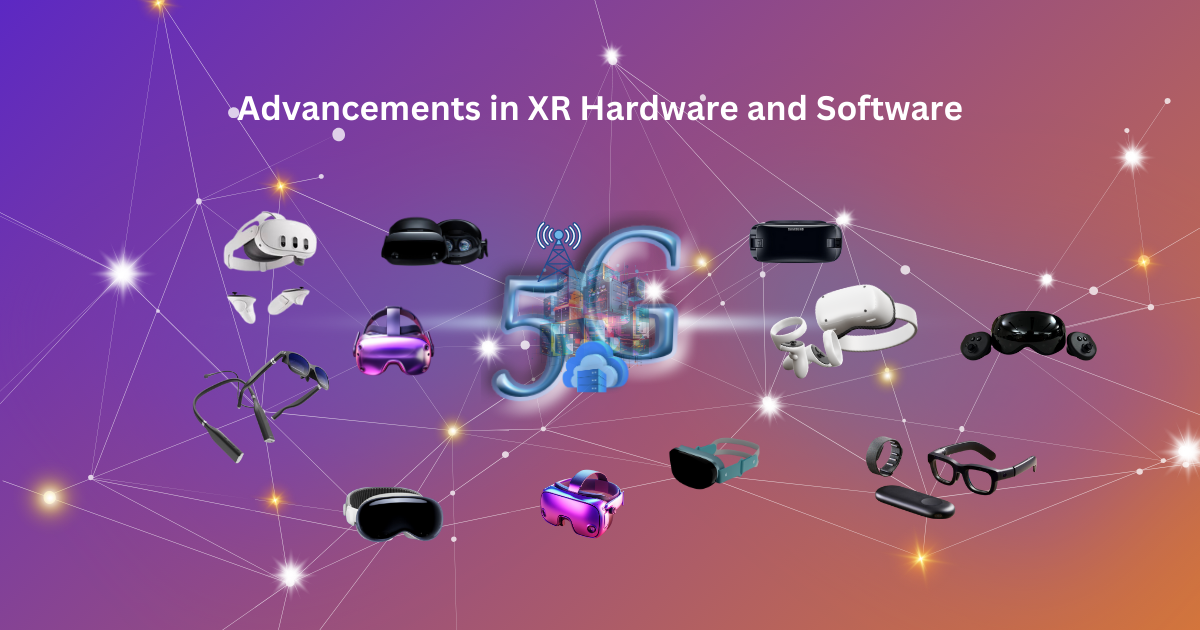
Advancements in XR Hardware and Software
1. XR Hardware in 2025
One of the key factors contributing to the widespread adoption of XR in 2025 is the significant improvement in hardware. Headsets and wearables have become more lightweight, comfortable, and affordable, making XR experiences accessible to a broader audience.
2. VR Headsets
VR headsets in 2025 have seen a massive leap in resolution and field of view, offering lifelike visual experiences. Devices are now wireless, relying on powerful built-in processors rather than external computers or gaming consoles. Eye-tracking technology has also become a standard feature, allowing for more natural interactions and improved performance.
3. AR Glasses
AR glasses have evolved to the point where they are indistinguishable from regular eyeglasses. These devices integrate seamlessly with smartphones, offering users the ability to navigate, interact with digital content, and access information without pulling out their phones. AR glasses have also gained widespread use in industries like healthcare, where they assist surgeons with real-time overlays of medical information.
4. MR Headsets
MR headsets, which combine elements of AR and VR, have become a tool of choice for professionals who need to interact with both digital and physical elements simultaneously. By 2025, MR headsets are being used for tasks such as architectural design, remote collaboration, and complex engineering simulations.
5. XR Software in 2025
The development of XR software has kept pace with advancements in hardware, leading to more sophisticated and user-friendly applications.
AI-Powered Experiences
Artificial Intelligence (AI) plays a central role in XR experiences in 2025. AI algorithms are now capable of analyzing user behavior and creating personalized immersive experiences. This AI integration enables adaptive learning environments, personalized marketing campaigns, and even virtual assistants that guide users through digital spaces.
6. 5G and Cloud XR
The rollout of 5G networks has been a game-changer for XR. Low-latency, high-bandwidth connections allow for real-time streaming of immersive content, eliminating the need for powerful onboard processing. Cloud computing further enhances this by offloading intensive tasks to remote servers, making XR experiences more
How will XR evolve?
The evolution of Extended Reality (XR)—which includes Virtual Reality (VR), Augmented Reality (AR), and Mixed Reality (MR)—is poised to accelerate dramatically beyond 2025. XR technologies will become more integrated into our daily lives, impacting how we work, play, communicate, and interact with the world around us. Below is a detailed exploration of the key trends and advancements that will likely shape the future of XR.
1. Convergence of XR with Emerging Technologies
XR will increasingly merge with other cutting-edge technologies, creating a synergistic ecosystem that amplifies its capabilities.
a) Artificial Intelligence (AI) and Machine Learning (ML)
AI and ML will make XR environments more adaptive and responsive. In the future, XR experiences will be able to:
Analyze user behaviors in real-time and adjust content accordingly, offering personalized interactions.
Use AI-driven virtual assistants that can guide users through both virtual and mixed-reality environments, creating a more intuitive experience.
Natural language processing (NLP) will be used in XR to enable seamless conversations between users and virtual characters or AI agents.
b) Internet of Things (IoT)
The integration of IoT with XR will allow for a deeper connection between physical objects and digital environments. Imagine a home or workplace where IoT-enabled devices can be controlled through an AR interface, or where physical machines in factories are monitored and manipulated through MR applications.
c) 5G and Beyond
5G networks will continue to play a major role in enabling real-time, high-bandwidth XR experiences. As we look toward 6G, we can expect even lower latency and greater speeds, making streaming XR content without high-powered devices a reality. Cloud XR (processing-intensive tasks being handled in the cloud) will become more prevalent.
d) Quantum Computing
As quantum computing matures, XR systems will be able to process immense amounts of data far more quickly. Quantum computing will allow for highly complex, real-time simulations that were previously unattainable due to processing limitations.
2. Evolution of XR Hardware
The physical devices used to access XR will evolve significantly, becoming smaller, more comfortable, and more powerful.
a) Sleeker and More Comfortable Wearables
By 2030 and beyond, VR and MR headsets will likely become lighter and less intrusive, resembling something closer to stylish eyewear or even contact lenses. Advances in materials, such as graphene, will reduce the weight of devices, while wireless connectivity and increased battery life will improve user experience.
b) Full Sensory Immersion
Future XR hardware will focus on more than just visual and auditory immersion. Haptic feedback devices (such as gloves, suits, or even implants) will evolve to provide tactile sensations, making users feel physical contact in virtual worlds. These technologies will simulate the sense of touch, pressure, temperature, and even motion.
c) Brain-Computer Interfaces (BCIs)
One of the most revolutionary developments in XR will be the integration of BCIs, allowing users to control virtual environments directly with their minds. This technology is already in early development, but as neural interfaces become more sophisticated, XR experiences will shift from controller-based interactions to thought-driven interactions, creating unprecedented levels of immersion.
d) Eye-Tracking and Facial Expression Recognition
Eye-tracking technology is expected to become a standard feature in XR devices. This will enable more natural user interactions, improve rendering performance, and allow users to control virtual objects simply by looking at them.
Facial expression recognition will allow avatars or virtual characters to mimic real-time human emotions, improving the realism of social interactions in XR environments.
3. Applications of XR Across Industries
XR in Healthcare
Healthcare is one of the industries most profoundly impacted by XR technologies. By 2025, XR is used in various healthcare applications, from surgical planning to mental health therapy.
- Surgical Training and Planning
XR allows surgeons to practice complex procedures in a risk-free virtual environment, improving outcomes and reducing the chances of errors during actual surgeries. MR is particularly useful for planning surgeries, as it enables doctors to visualize a patient’s anatomy in 3D, providing greater precision. - Mental Health Therapy
Virtual Reality is increasingly being used to treat mental health conditions such as anxiety, PTSD, and phobias. By immersing patients in controlled virtual environments, therapists can help them confront their fears or triggers in a safe space. The rise of AI-powered virtual therapists further supports mental health treatment by providing real-time feedback and guidance.
XR in Education
Education is another sector that is experiencing a transformation due to XR technologies. Immersive learning environments allow students to engage with subjects in ways that were previously impossible.
- Virtual Classrooms
In 2025, virtual classrooms have become a norm, offering students the ability to attend lectures and collaborate with peers in immersive, interactive environments. XR allows for field trips to historical landmarks, virtual dissections in biology class, or exploring the solar system in a way that makes learning more engaging and effective. - Skills Training
XR is particularly effective for vocational training. Industries such as aviation, construction, and healthcare utilize XR simulations to train workers in real-world scenarios without the risk of accidents. For example, a construction worker can practice operating heavy machinery in VR before ever stepping onto a worksite.
XR in Entertainment and Gaming
The entertainment industry continues to be a major driver of XR technology adoption. Gaming, in particular, has pushed the boundaries of what is possible in virtual worlds.
- Immersive Storytelling
By 2025, XR has redefined storytelling. Filmmakers and game developers are creating interactive experiences where the audience becomes part of the narrative. In these experiences, users can explore virtual environments, make choices that impact the story, and interact with digital characters. - Social XR
Social interaction within XR environments has taken off, with virtual hangouts, concerts, and events becoming popular. Platforms like VRChat and Facebook’s Horizon Worlds allow users to connect with friends and meet new people in virtual spaces, blurring the lines between digital and physical socialization.
XR in Business and Work
XR is transforming the way we work, collaborate, and communicate in 2025. Remote work, in particular, has seen a significant shift with the integration of immersive technologies.
- Virtual Offices and Collaboration
As businesses continue to adopt remote work, XR provides a solution for collaboration. Virtual offices and meeting rooms allow employees to work together in a shared virtual space, regardless of their physical location. In these environments, users can interact with 3D models, present ideas on virtual whiteboards, and communicate in a way that mimics in-person interactions. - Product Design and Prototyping
XR is a game-changer for product design and prototyping. Engineers and designers can create 3D models in virtual environments, allowing them to test and iterate on their designs before manufacturing. MR, in particular, allows for collaboration between teams working with both physical and digital models, improving efficiency and reducing costs.
XR in Retail and Marketing
Retailers and marketers are leveraging XR to create more personalized and interactive shopping experiences.
- Virtual Try-Ons and Showrooms
By 2025, customers can use AR to try on clothes, accessories, or even makeup without ever stepping into a store. Virtual showrooms allow them to explore products in 3D and visualize how they would look or fit in real life, making shopping more convenient and reducing return rates. - Immersive Brand Experiences
Brands are using XR to engage consumers in new ways. Immersive marketing campaigns that allow customers to interact with products or experience brand stories in virtual environments are becoming common, enhancing customer engagement and loyalty.
4. The Blurring of Physical and Digital Realities
As XR evolves, the boundaries between the physical and digital worlds will become increasingly blurred. The convergence of XR with the physical world will create new hybrid realities, where digital content seamlessly integrates with physical objects.
a) Persistent AR Layers in the Real World
AR is moving toward creating persistent digital layers in the real world. By 2030, entire cities could be overlaid with digital information, from smart signage to interactive wayfinding systems. People will be able to leave digital notes or graffiti on physical landmarks, which will be visible to others wearing AR glasses.
b) Spatial Computing
In the future, spatial computing will enable computers to interact with and understand the physical world in three dimensions. Instead of traditional 2D screens, interactions will occur in 3D environments where digital objects can move and respond to real-world stimuli, making it possible to manipulate digital information in physical space intuitively.
c) Digital Twins
The concept of digital twins—virtual replicas of real-world objects, environments, or systems—will expand significantly. By 2030, entire smart cities could have digital twins, enabling real-time monitoring and simulation of traffic, weather patterns, and public infrastructure. Businesses will use digital twins for complex tasks like supply chain management, remote equipment maintenance, or even environmental conservation efforts.
Challenges and Opportunities in XR Development
Ethical Considerations
As XR becomes more integrated into everyday life, questions about privacy, data security, and the potential for addiction arise. The collection of personal data in immersive environments presents new challenges for regulators, while the potential for users to become overly immersed in virtual worlds raises concerns about mental health and societal impact.
Accessibility and Inclusivity
Ensuring that XR technologies are accessible to everyone, regardless of physical or cognitive ability, is a key challenge in 2025. Developers are working to create more inclusive experiences, with features like voice control, gesture-based interactions, and customizable interfaces to accommodate different user needs.
Overcoming Technological Barriers
Despite the advancements, there are still technological barriers to widespread adoption. Battery life, processing power, and network latency are ongoing challenges that developers are working to address. However, with the continued rollout of 5G and improvements in hardware, these obstacles are expected to diminish over time.
The Future of XR: What Lies Ahead?
As we look beyond 2025, the future of XR is filled with exciting possibilities. The convergence of XR with other emerging technologies, such as artificial intelligence, quantum computing, and the Internet of Things (IoT), will open up even more opportunities for innovation.
In the long term, we can expect XR to become an integral part of our daily lives. The fusion of physical and digital realities will create new ways of interacting with the world, from fully immersive virtual travel experiences to enhanced productivity tools that blend seamlessly with our physical environment. XR will not only change how we consume content but also how we communicate, learn, and work, shaping the future of human interaction in profound ways.
Conclusion
Immersive technologies, or XR, are on the verge of transforming the way we experience the world. In 2025, advancements in VR, AR, and MR have made XR more accessible, powerful, and versatile than ever before. From healthcare and education to entertainment and business, the applications of XR are vast and growing. As XR continues to evolve, it promises to create new opportunities for innovation and redefine our relationship with the digital and physical worlds.

